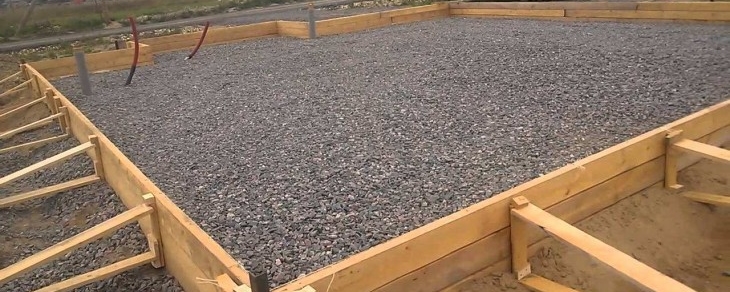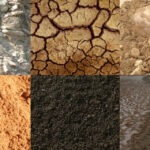At the base of any residential or industrial building, there is a foundation. The service life of a capital building depends on the quality and strength of the foundation. One of the components of the concrete mixture is crushed stone, which is characterized by a fractional indicator. Only experienced professionals know what fraction of crushed stone is needed for the foundation and what other material parameters play a decisive role during construction.
Which type is better?
For the construction of the foundation, a granite type is chosen, which is characterized by high strength, giving reliability to structural materials. However, granite crushed stone has a high cost, so for light commercial buildings and low-rise construction, you can choose other options: gravel or limestone crushed stone. It is also important to take into account the condition and composition of the soil, and the proximity of groundwater. If water flows lie close enough, at shallow depths, it is recommended to choose more expensive and durable granite crushed stone.
Crushed limestone, which contains admixtures of gravel, is also in demand among builders. This is an environmentally friendly, high-quality material that is as affordable as possible. Its strength is significantly lower than that of granite crushed stone, so the material is used exclusively for small outbuildings: garages, gazebos, and sheds.
Material characteristics
In addition to the type of crushed stone, to accurately determine the quality parameters of the material, it is important to take into account its other characteristics. When choosing construction crushed stone, it is important to pay attention to such parameters as:
- strength,
- flakiness,
- factionalism,
- frost resistance.

Flakiness – determines the flat characteristics of crushed stone. The indicator can be normal, improved, run-in, or cuboid. With normal flakiness, the material contains many needle- or plate-type stones, as a result of which voids and cavities are formed in the concrete, deteriorating the quality and strength of the structure. Experts recommend choosing a cube-shaped crushed stone for the foundation. This is a more durable material, compared to lamellar and conventional crushed stone, characterized by high strength, density, and the absence of voids in the concrete mixture.
For the construction of foundations for residential and industrial buildings, it is recommended to choose a crushed stone that can withstand more than 300 freezing cycles.
Strength is an indicator of crushed stone’s resistance to the destructive effects of external factors. The highest strength indicators are for granite and gravel crushed stone, the lowest are for limestone rocks.
There is one more parameter that is taken into account when choosing a building material. This is radioactivity and safety for future homeowners. The radioactivity indicator does not affect the strength of the structure, but it must be taken into account to guarantee the safety and environmental friendliness of the structure for humans and the environment. The supplier must have a certificate indicating the verification of the radioactivity level of crushed stone, especially for granite types.
Fractional indicator
Crushed stone is a fine bulk building material, but the degree of crushed crushed stone can vary. There is fine, medium, and coarse crushed stones:
- fine fraction is determined up to 5-20 mm;
- medium – from 20-40 to 25-60 mm;
- large – from 20-70 to 40-70 mm.

The fine-grained fraction is ideal for the production of reinforced concrete products and the construction of foundations. The middle one is also used for foundation work. Large crushed stone is used in multi-story construction when constructing massive foundations of high-rise buildings or industrial buildings and industrial buildings.
Crushed stone of a fine and fine-medium fraction of a cube-shaped type is considered ideal for a reliable and durable foundation. Such crushed stone is quickly compacted, and air easily escapes from it, eliminating the risk of void formations. The resulting solution is used for foundation work in private and multi-apartment housing construction. This is the best solution for a solid foundation that will last as long as possible.
What is secondary crushed stone?
There are offers on the market for recycled crushed stone, which is available at an affordable price. What it is? These are crushed parts of concrete and brick. The advantages of such material end with low cost; it has no other advantages. The strength of a building structure in the construction of which recycled crushed stone was used cannot be guaranteed. During the period of initial operation, crushed stone could lose all its basic practical properties, and the frost resistance and strength of the material could also significantly decrease.

Proportions of crushed stone in solution
In addition to crushed stone, the concrete solution includes sand, cement, and water. Cement acts as a binding material, and sand acts as a finer filler. The materials are mixed in the following proportions: 1 part cement, 3 parts sand, 5 parts crushed stone, 2 parts water. Crushed stone grains form a frame, which bears the main load during further operation. Sand only fills voids and increases adhesion strength.
High-quality and quick mixing is carried out in a concrete mixer, then the resulting solution is poured into a prepared container or directly onto the construction site. The foundation of buildings and structures is constantly subjected to significant loads, so its construction requires a serious and responsible approach.



